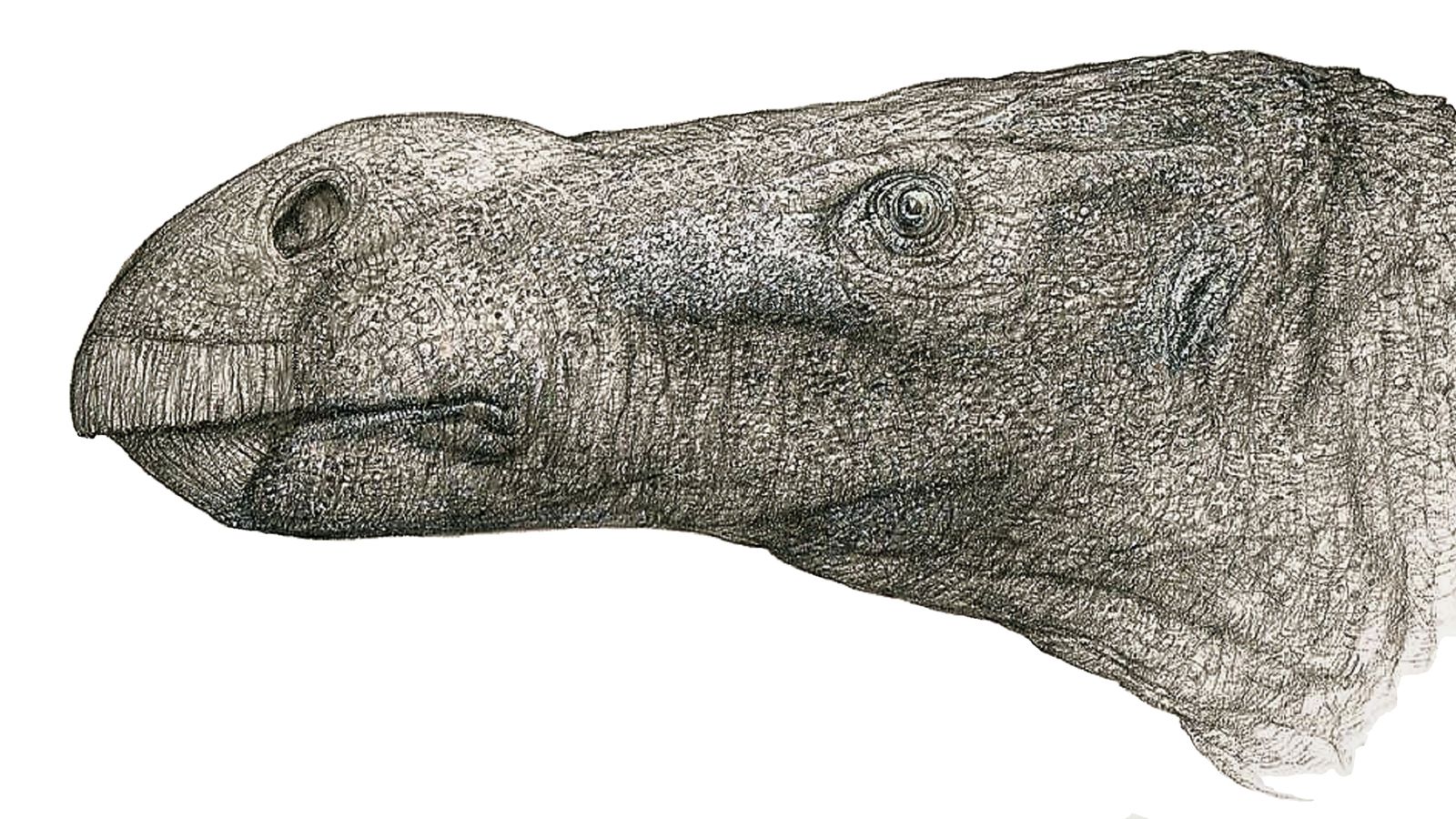A retired doctor who spent lockdown rummaging through boxes of old bones has discovered a new species of dinosaur with a uniquely “bulbous” nose.
Jeremy Lockwood, who is studying for a PhD at the University of Portsmouth, set himself the task of cataloguing every iguanodon bone discovered on the Isle of Wight.
The 64-year-old former GP from Chale, on the Isle of Wight, sorted the bones from collections of the Natural History Museum in London and the Dinosaur Isle Museum.
It was during this process he discovered the unusually large nasal bone, which had been in storage since 1978.
Dr Lockwood, who studies in the school of environment, geography and geoscience, said the discovery made “one of the happiest days of lockdown because it was a sign there really was something different about this particular dinosaur from the Isle of Wight”.
He had been determined to prove the two most common dinosaurs on the Isle of Wight – know as the “cattle of the Cretaceous” – were not alone roaming the island.
He added: “For over 100 years, we’d only seen two types of dinosaur on the Isle of Wight – the plant-eating Iguanodon bernissartensis and Mantellisaurus atherfieldensis.
Two new species of dinosaur discovered on Isle of Wight
Liam Gallagher ‘fell out the helicopter’ after Isle Of Wight Festival and shares photo of scraped face
Social care facing ‘unprecedented crisis’ over staff shortages, say officials
“I was convinced that subtle differences between bones would reveal a new species, so I set out to measure, photograph and study the anatomy of each bone
“My background is medicine, so I’ve studied anatomy and was always struck by the fact that the bones we find in humans all look exactly the same.
“I’ve seen dinosaur bones that are reportedly from the same species, but I’ve been baffled as to why they would look so different.
“Last year during lockdown, after four years of going through boxes and boxes of bones, I decided to reconstruct the skull of a specimen, which had been in storage since 1978, and to my astonishment, I noticed the end of its nose was bulbous.”
Working with Professor Dave Martill, from the University of Portsmouth, and Dr Susannah Maidment, from the Natural History Museum, Dr Lockwood has named the discovery “Brighstoneus simmondsi” in honour of the village close to the excavation site – Brighstone.
The latter part of the name is in tribute to Keith Simmonds, an amateur collector who was involved in first finding and excavating the specimen.
It comes three days after scientists discovered the first species of dinosaur that lived on Greenland 214 million years ago – and named it “Cold Bone”.
And in September, two new species of dinosaur were discovered on the Isle of Wight.






















